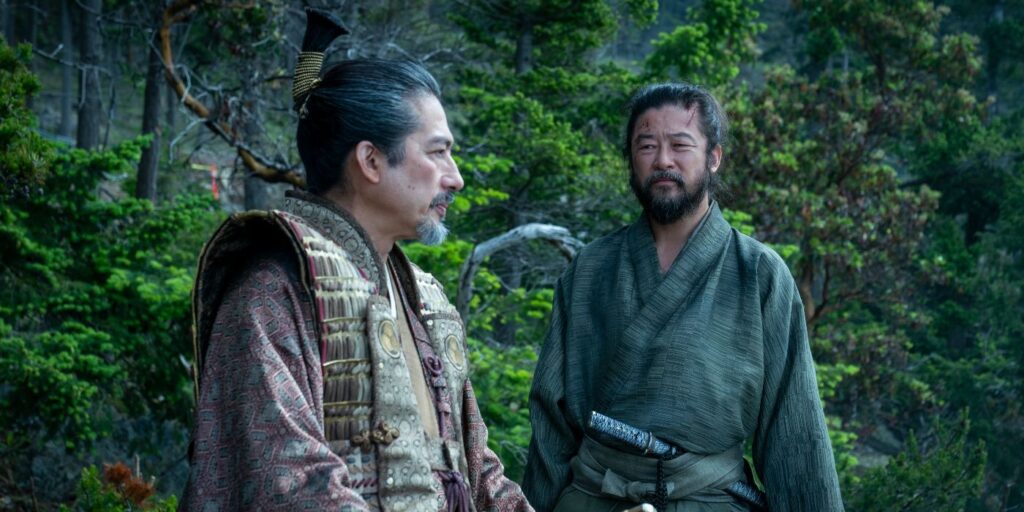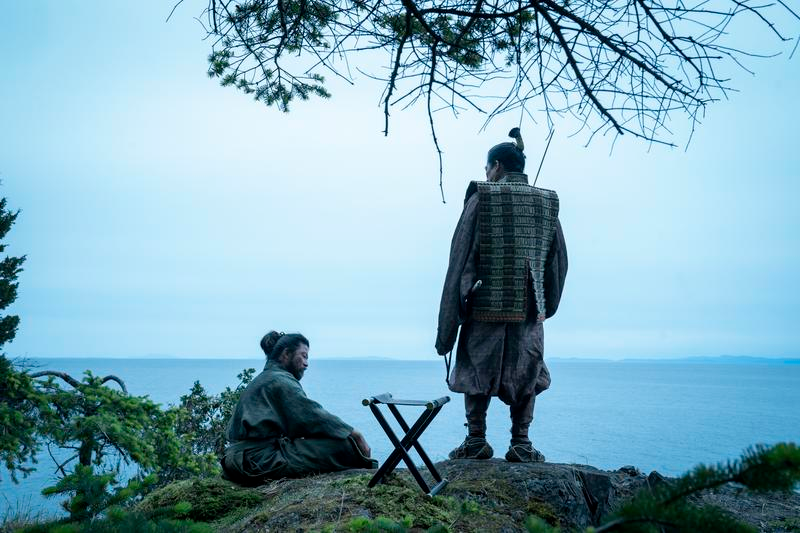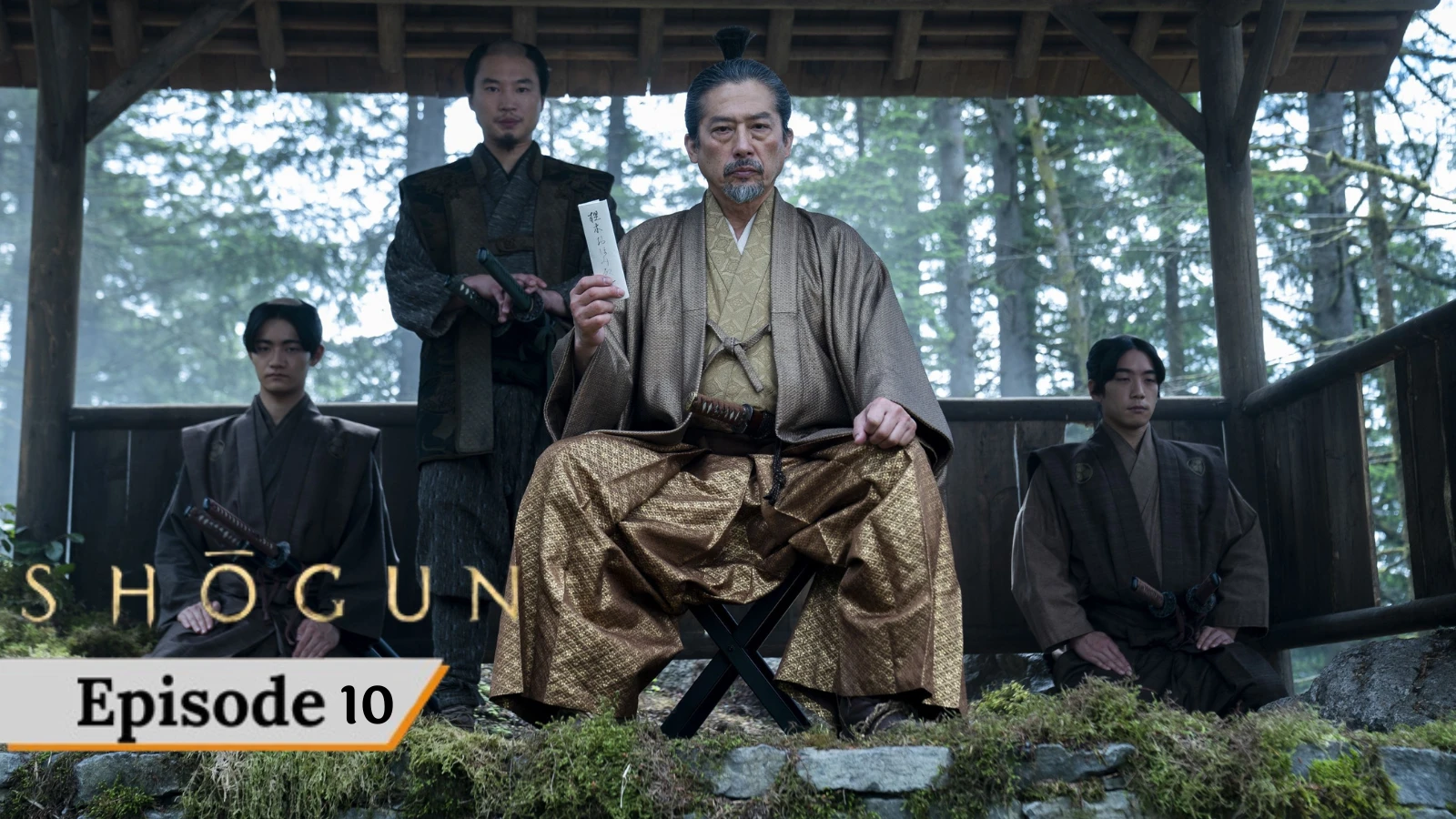Shogun Episode 10 Recap & Ending Explained: The sweeping historical saga, Shōgun, from FX, has reached its climactic conclusion, leaving audiences spellbound by the intricate tapestry of courage, betrayal, and destiny woven throughout its ten captivating episodes.
As the curtain falls on this epic journey, we bear witness to the profound impact of Lady Toda Mariko’s tragic demise, a pivotal event that reverberates through the finale like a stone dropped into a still pond, its ripples carrying us towards an emotionally charged epilogue.
Shogun Episode 10 Recap
The episode opens with Mariko’s death hanging like a pall over the characters, knocking the wind out of their sails and forcing them to confront harsh realities. Lord Ishido, the mastermind behind the shinobi attack, finds himself grappling with the unintended consequences of his actions. Yabushige, once a scheming lord, is rendered partially deaf and emotionally shattered, his ambitions reduced to mere spectres of their former selves.

Ochiba no Kata, the mother of the Heir, experiences a profound shift in perspective. Witnessing the depths of Mariko’s sacrifice, she pens the final line of her friend’s unfinished poem, “Flowers are only flowers because they fall,” symbolizing the transience of life and the inevitable change it brings. Ochiba’s newfound clarity leads her to question her allegiance with Ishido, realizing that Toranaga offers a stronger, more promising future for her son.
Blackthorne’s Fate: A Path Forged in Loyalty
John Blackthorne, the pilot-turned-hatamoto, finds himself at a crossroads, haunted by visions of a life he could have led. Yet, Mariko’s final act – securing the Church’s promise to spare Blackthorne’s life – sets him on an unexpected path. Facing the prospect of death at the hands of the Council, Blackthorne discovers that the Erasmus has been sunk, a devastating blow to his hopes of returning home.
In a poignant exchange with Lord Toranaga, Blackthorne learns the truth behind the ship’s destruction – a test of his loyalty. Moved by Blackthorne’s willingness to commit seppuku in protest of Toranaga’s “callous punishment” of Ajiro, the lord offers him a new purpose: to rebuild his ship and establish a fleet for Japan.
Yabushige’s End: A Tragic Farewell
Yabushige, once a formidable force, meets his end in a manner befitting his complex character. Confronted by his nephew Omi and the weight of his treachery, Yabushige requests a “good death” – a final act of defiance. Denied his wish, he is instead ordered to commit seppuku, with Toranaga himself acting as his second.
In a poignant exchange, Toranaga reveals the true extent of his plan, “Crimson Sky,” which has already unfolded without the need for an immense battle. Ishido’s forces will be disavowed by the Council of Regents, ensuring Toranaga’s swift and complete victory. As Yabushige takes his final breath, Toranaga delivers the decapitating blow, a symbolic severing of ties with the past.
Toranaga’s Triumph: A Future Unveiled
In the finale’s closing moments, Blackthorne commits himself to rebuilding the Erasmus, a task that symbolizes his newfound purpose in Japan. As he hoists the vessel from the water, Mariko’s husband, Buntaro, lends his strength to the cause, signifying a newfound understanding between the two men.
Toranaga, his gaze fixed on the horizon, contemplates the limitless possibilities his victory will ensure. Whether he will claim the title of shōgun remains unanswered, but his triumph is undeniable, secured not through bloody battles but through a masterful strategy that unravelled without the need for excessive violence.
Shōgun’s finale is a masterful tapestry of emotions, weaving together threads of loss, loyalty, and the promise of a new dawn. As the series concludes, it leaves an indelible mark on the souls of its viewers, reminding us of the enduring power of courage, sacrifice, and the indomitable human spirit.
Shogun Episode 10 Ending Explained

The critically acclaimed FX series “Shogun” masterfully concluded its riveting tale with the tenth episode, leaving viewers in awe of the intricate web woven by the cunning Lord Toranaga. Based on James Clavell’s novel of the same name, which itself drew inspiration from the true story of Tokugawa Ieyasu, the show’s finale unravelled the ambitious plans of its central character, Yoshii Toranaga.
Toranaga’s Unwavering Pursuit of Power
From the outset, Lord Toranaga harboured a grand vision – to overthrow the Council of Regents and establish himself as the undisputed ruler of Japan, ushering in an era of unprecedented peace and stability. His conversation with the enigmatic Yabushige, moments before the latter’s ritualistic seppuku, unveiled the full extent of Toranaga’s machinations.
In a masterful display of strategy, Toranaga orchestrated events to ensure his adversary, Ishido, would be left without allies on the battlefield. By exploiting the deep bond between Lady Mariko and Ochiba-no-kata, the mother of the heir, Toranaga effectively severed Ishido’s lifeline, leaving him vulnerable to defeat.
The Fate of John Blackthorne
John Blackthorne, the English navigator whose story mirrored that of William Addams, found himself inextricably tied to Toranaga’s grand design. Initially dreaming of returning home and growing old with the memories of his ill-fated love, Mariko, Blackthorne’s aspirations were shattered when his ship was destroyed – an act orchestrated by none other than Toranaga himself.
Toranaga’s reasoning for keeping Blackthorne close was twofold: firstly, the navigator’s presence served as a convenient distraction, diverting the attention of Toranaga’s enemies; secondly, the Lord of Kanto found amusement in Blackthorne’s antics, a rare source of mirth amidst the turmoil of war.
The Bittersweet Finale
The finale’s opening sequence, depicting an elderly Blackthorne surrounded by grandchildren and reminiscing about his battles, proved to be nothing more than a fleeting dream. The reality was far more poignant, as Blackthorne bid farewell to Mariko by scattering her ashes into the sea, symbolically reuniting her with the waters she so cherished.
In a touching moment, Blackthorne relinquished the cross that had symbolized his faith, letting it sink into the depths, signifying his acceptance of his fate in Japan. The episode’s closing shot, with Blackthorne and Toranaga exchanging a knowing glance, hinted at the beginning of a new era – one where the Anjin would play a pivotal role in Toranaga’s vision for a unified Japan.
The Legacy of “Shogun”
“Shogun” not only captivated audiences with its breathtaking visuals and compelling characters but also offered a profound exploration of the complexities of power, loyalty, and cultural clashes. The finale’s masterful storytelling left viewers with a bittersweet taste, mourning the loss of beloved characters while marvelling at the intricate web of political maneuverings that ultimately reshaped the course of Japanese history.
As the curtain fell on this epic saga, one thing became abundantly clear: Lord Toranaga’s unwavering ambition and strategic brilliance had paved the way for his ascension to the coveted role of Shogun, ushering in a new era of stability and prosperity for Japan.






